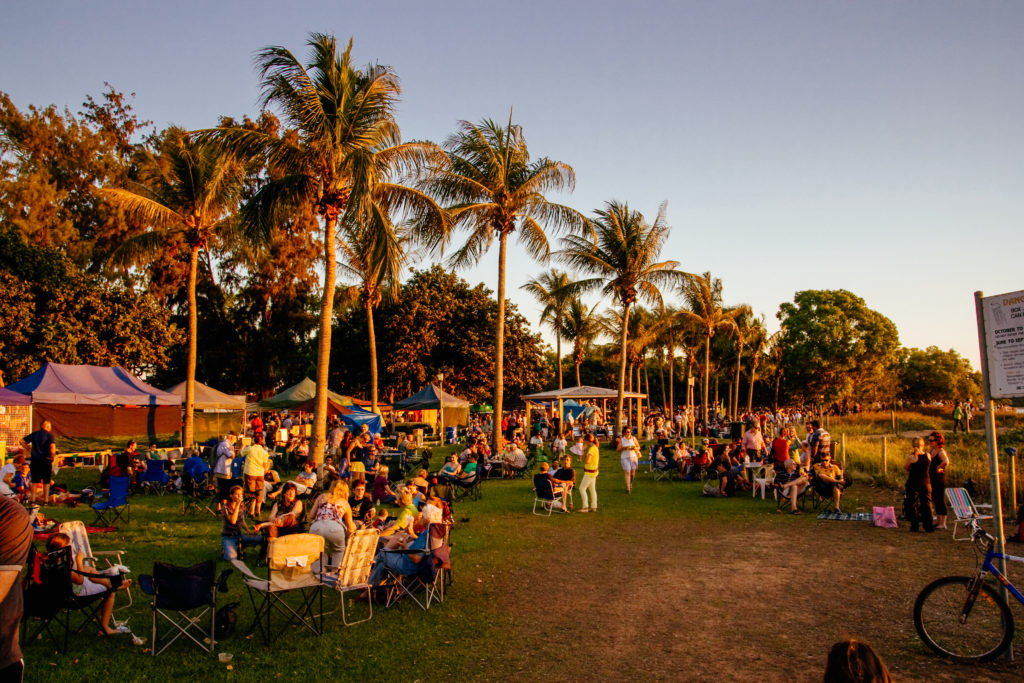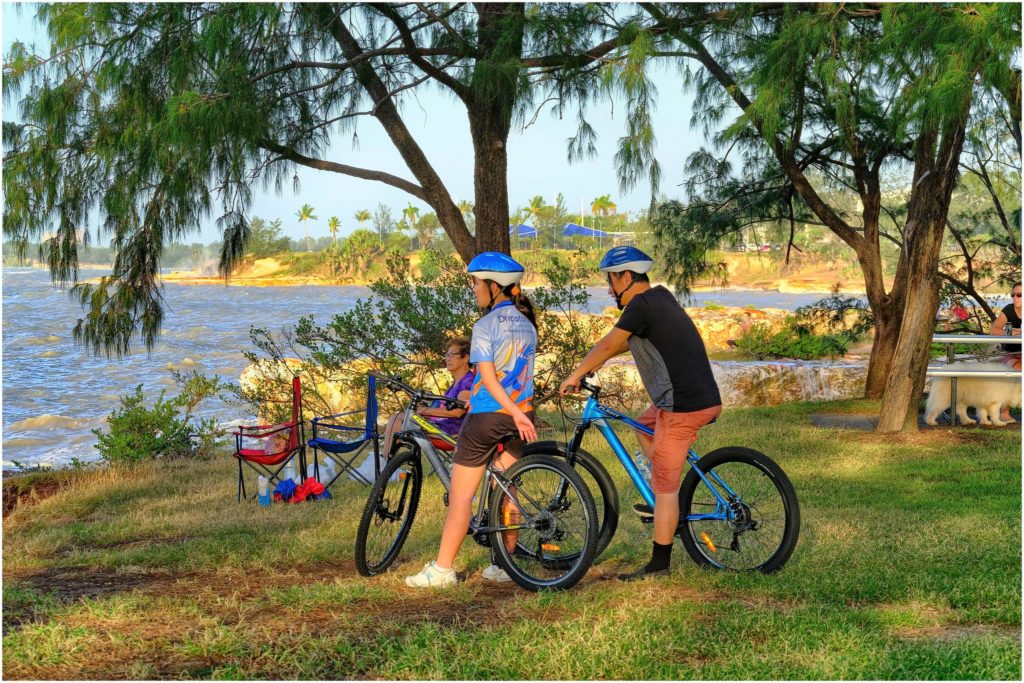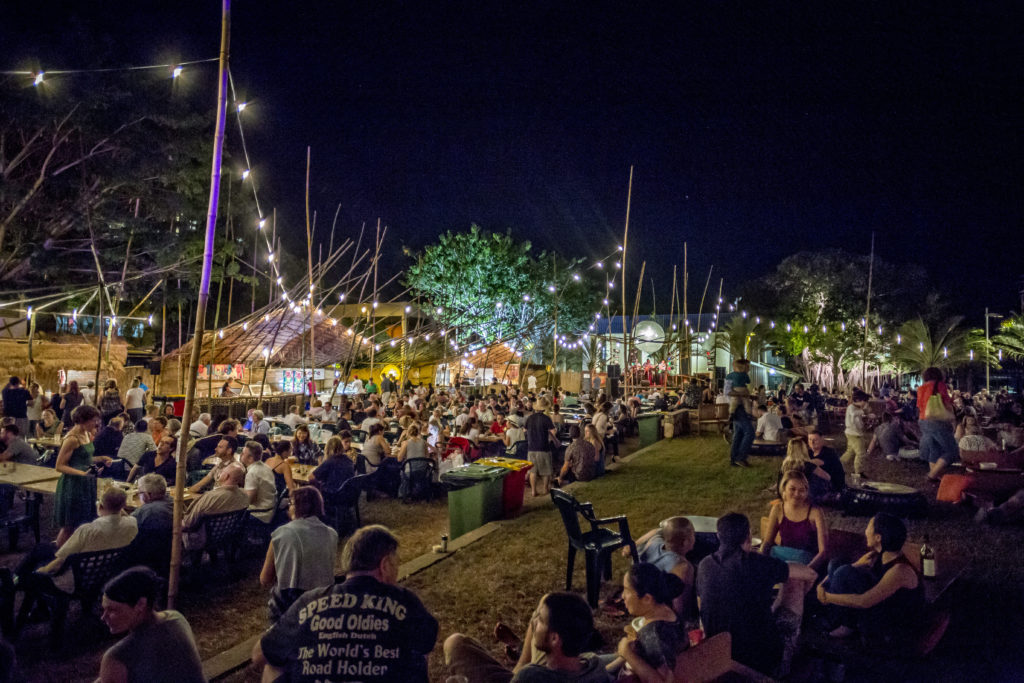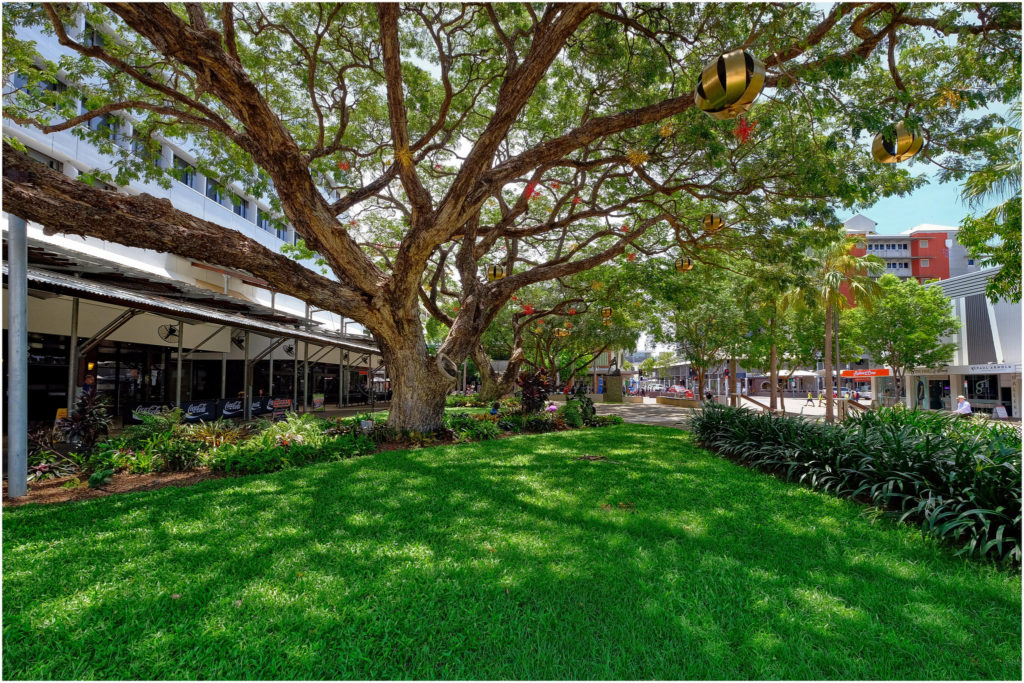
Mindil Beach sunset markets. Image: FiledImage via iStock.
Have you eaten green papaya salad at Mindil Beach sunset markets in Darwin? What about a walk through the Bicentennial Park on your way to the open-air cinema? Have you sat under a shady tree on a steamy Darwin day?
We’re improving Darwin’s parks and gardens so that they provide a cool haven in the tropical capital city.
The City of Darwin has more than 600 hectares of parks, gardens and foreshore areas under its care. These green spaces are the backdrop for family get-togethers, festivals, first dates and picnics with mates. They’re also important cool places as the climate changes.
The future looks hot for the Top End. Climate change projections for the Northern Territory show the number of days above 35°C could increase significantly by 2030. Darwin city will feel the full brunt of this, with the urban heat-island effect meaning that the inner city will be particularly hot in the future.
Better-designed parks and gardens have never been so important. Darwin city has more than 600 hectares, or 1480 acres, of green spaces including foreshores, gardens and parks. This works out to about 284 square meters of green space for every person in Darwin.
To improve these areas, city planners first need to understand how different user groups in Darwin interact with green spaces: how do their needs and preferences for amenities and benefits vary? That’s where our scientists come in.
How do you like your parks?
Our scientists are researching community needs for urban green space in Darwin. Dr John Gardner is the research lead on this project. John and his team want to know how different user groups in Darwin interact with green spaces.
Footy-kicking or picnicking. Wining and dining. Strolling or under-arm-bowling. He’s investigating how people’s needs and preferences for amenities vary.

People cycling at sunset on Nightcliff foreshore in Darwin. Image: Geoff Whalan via Flickr.
“Public green space is so important. It helps reduce the temperature, improves health and well-being, helps make the city centre more liveable,” John said.
“We know that Darwin is hot and is going to get hotter. Trees are important and going to get more important. In the face of this increasing temperatures, green spaces come to the rescue!”
But John said there are big gaps in our knowledge.
“For example, what trees do we plant that will withstand cyclones? What system do we put in place so green spaces in Darwin are more usable, more user-friendly?,” he said.
“We want to ask people how they use parks, what they want them for, what they like about the current parks, and what they’d like in the future.”

Darwin Festival 2016. Image: Tourism NT via Nick Pincott
How will this research help in improving Darwin’s parks?
The information John and his team gather will inform the development of green infrastructure strategies for Darwin. With more data, the strategies will be able reflect the diversity of community values and needs.
For instance, green spaces in Darwin can be re-designed to be more functional so that they can help people relax with friends and family, interact with nature, or find a place to exercise.
Want to get involved? It’s a walk in the park!
This study on improving Darwin’s parks will start soon and run for a few months. John will ideally be running group discussions in Darwin with people who use green spaces, but depending on the COVID-19 situation he might have to use an online survey instead.
He is holding a free webinar on Thursday, 25 February: Planning better green spaces for our communities.
This one-hour webinar will provide insights from projects and research from around Australia. It will focus on how green space can be planned for community benefits including adaption to climate change impacts. The discussion is relevant for planners, consultants, students, researchers and anyone with an interest in how to reflect diverse community values and preferences in urban greening strategies.
This project is a part of the Darwin Living Lab, a 10-year collaboration between the Australian and Northern Territory governments and the City of Darwin, under the Darwin City Deal.

Raintree Park, Darwin CBD. Image: Geoff Whalan via Flickr.


27th February 2021 at 2:34 pm
The city area is beginning to look nice and green,medium strips Dayly street, The Boulevard,Esplanade,wharf precinct,Gardens oval area, Gulrieth Ave,etc………..
I would like Darwin city council and Building Board encourage Developers to follow Singapore’s lead and green the buildings—-this will give the ultimate feeling of green space……
25th February 2021 at 2:32 pm
I know Darwin well. Plant trees or alternatives for shade. I thought that the council was already doing that? Years since I was there but I remember the city centre stinking hot.